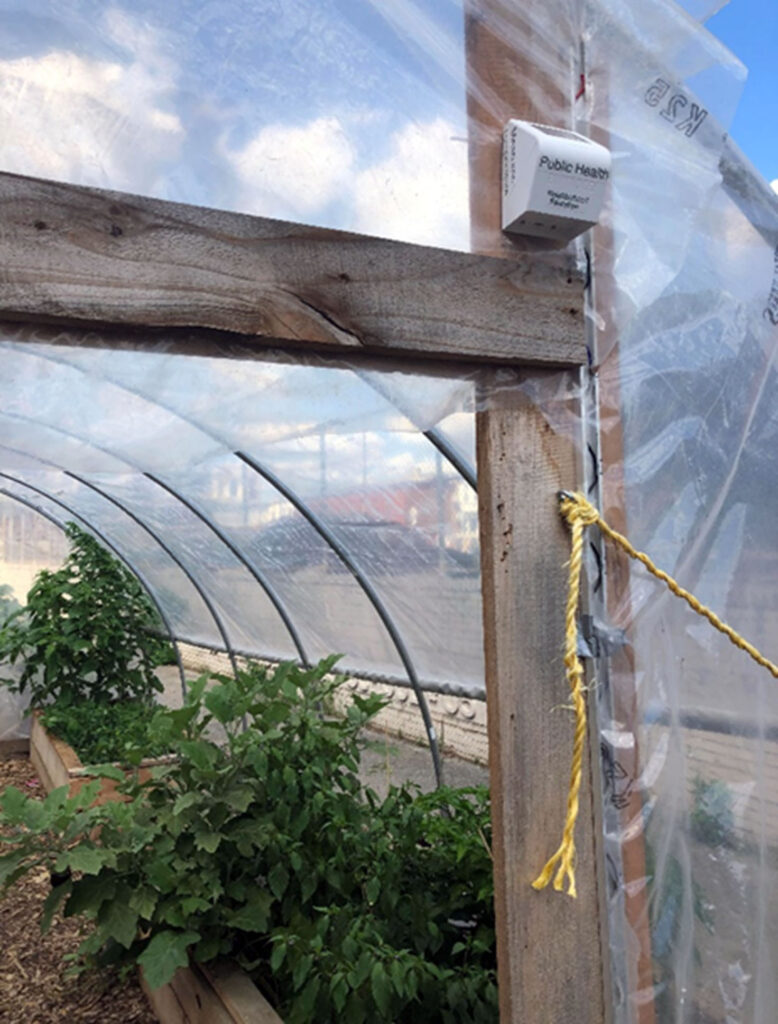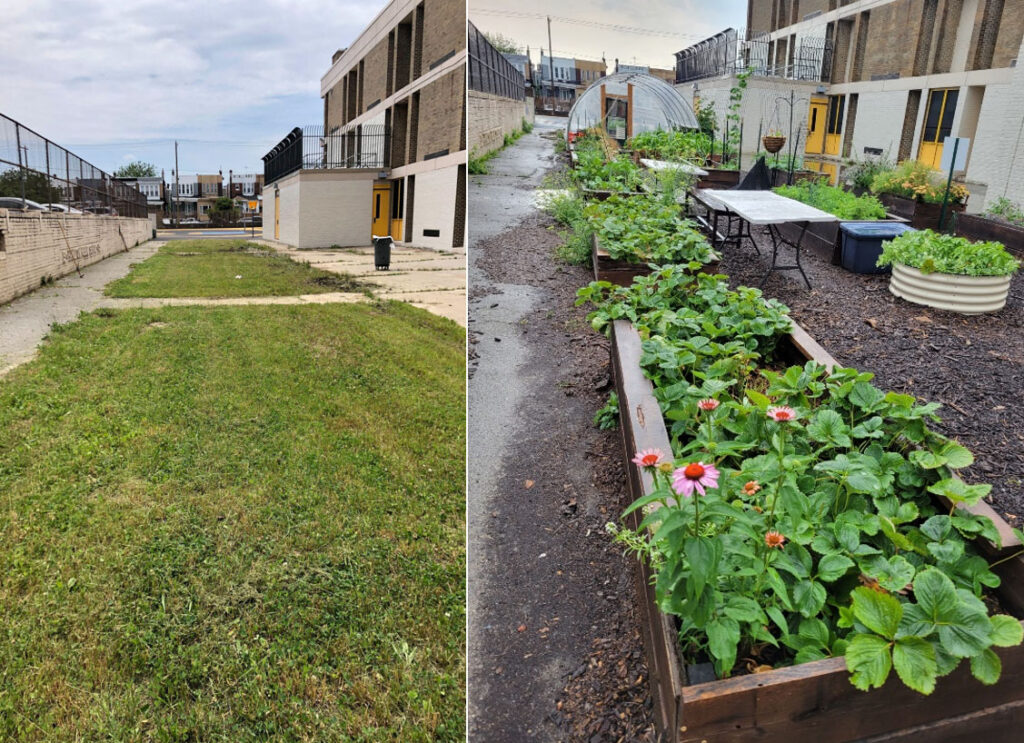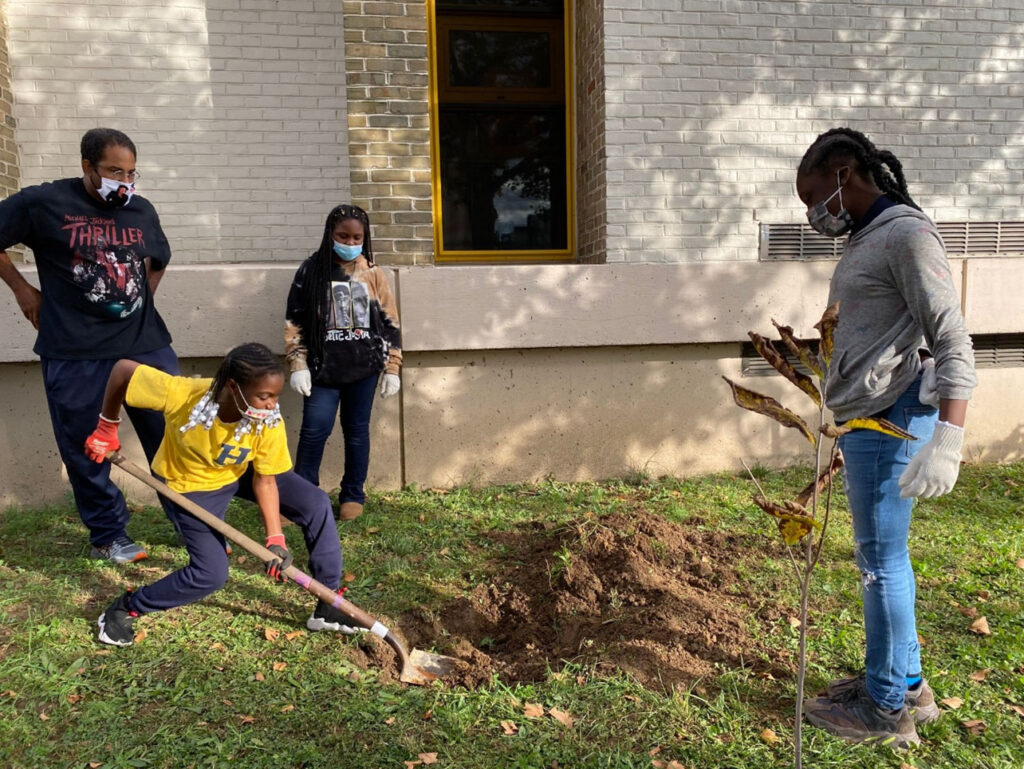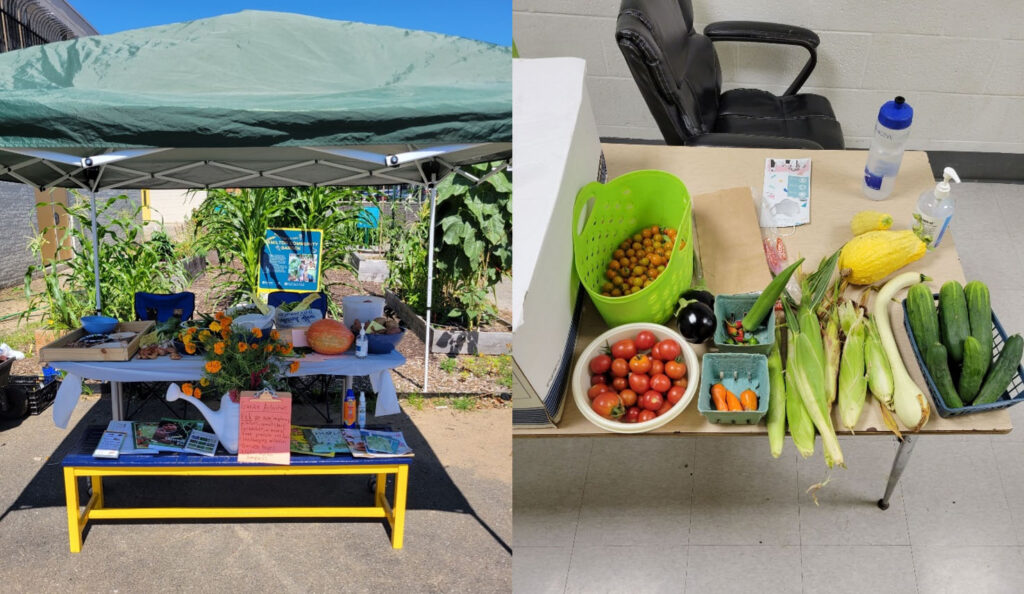By Colby Snyder
Chemical & Biomolecular Engineering and Physics & Astronomy
Vagelos Integrated Program in Energy Research, Class of 2026
University of Pennsylvania
Published March 18, 2024
Photos courtesy of the Penn Netter Center
As global temperatures rise, endangering billions of city residents, it is more important than ever to deliver engineering solutions to communities in need. The NRT Soft AE Program’s Adapting to Extreme Heat initiative works toward this goal, aiming to integrate scientific discovery with community initiatives. We recently spoke with Anna Balfanz, the Academically Based Community Service (ABCS) Coordinator at Penn’s Netter Center, to learn more about the considerations for scientific community partnerships.
Balfanz described a greenification project at the Andrew Hamilton School, a K-8 university-assisted community school in Cobbs Creek, as an example of community partnerships done right. Over the past few years, members of the Penn and Andrew Hamilton communities worked together to build a greenspace at their school that included an edible garden, a food forest, and rain gardens. The garden’s design captures excess rainwater for its plants, and those plants provide food for students and community members.
Today, the space hosts a gardening club, serves as a hands-on teaching and learning tool, produces over 500 pounds of produce per year, and offers a venue for school events. Balfanz and the Netter Center let the needs identified by school leaders guide the project, ensuring that the garden will benefit the community for years to come.
One key to success that Balfanz pointed out was the importance of a relationship-first approach when collaborating with community groups. The Netter Center has spent years developing these relationships with West Philadelphia schools, creating a “robust infrastructure at the school to learn [students’ and teachers’] needs.” Balfanz says similar approaches can be useful for the Adapting to Extreme Heat initiative and other research projects. Community hubs, like schools and religious organizations, can be very helpful first contacts. From our conversation, it was clear that strong partnerships with community organizations make successful projects possible.
 The garden also shows how to balance research with meaningful action. Scientific community initiatives often collect data without definite plans for its use, leading to flashy publications but few real-world changes. In a follow-up project supported by the Environmental Innovations Initiative, Balfanz and colleagues from the Weitzman School of Design, Temple University, and the Clean Air Council installed temperature and humidity sensors in the new garden. Balfanz explained that this sequence was intentional: building the garden was the top priority, and the sensors provided a secondary benefit. Now that renovations are complete, this sensor system can even be integrated into science lessons, helping students learn before any data is published.
The garden also shows how to balance research with meaningful action. Scientific community initiatives often collect data without definite plans for its use, leading to flashy publications but few real-world changes. In a follow-up project supported by the Environmental Innovations Initiative, Balfanz and colleagues from the Weitzman School of Design, Temple University, and the Clean Air Council installed temperature and humidity sensors in the new garden. Balfanz explained that this sequence was intentional: building the garden was the top priority, and the sensors provided a secondary benefit. Now that renovations are complete, this sensor system can even be integrated into science lessons, helping students learn before any data is published.
The Andrew Hamilton project exemplifies the best practices for integrating science and engineering with community outreach. New data might guide future projects, but it shouldn’t be viewed as a substitute for action. For extreme heat research, this means carefully planning how data will be used to help the communities from which it was gathered. This data could accompany immediate efforts like repainting roofs and planting trees. A relationship-first, action-oriented approach guided by community members’ needs will ensure that science projects benefit all parties involved.



